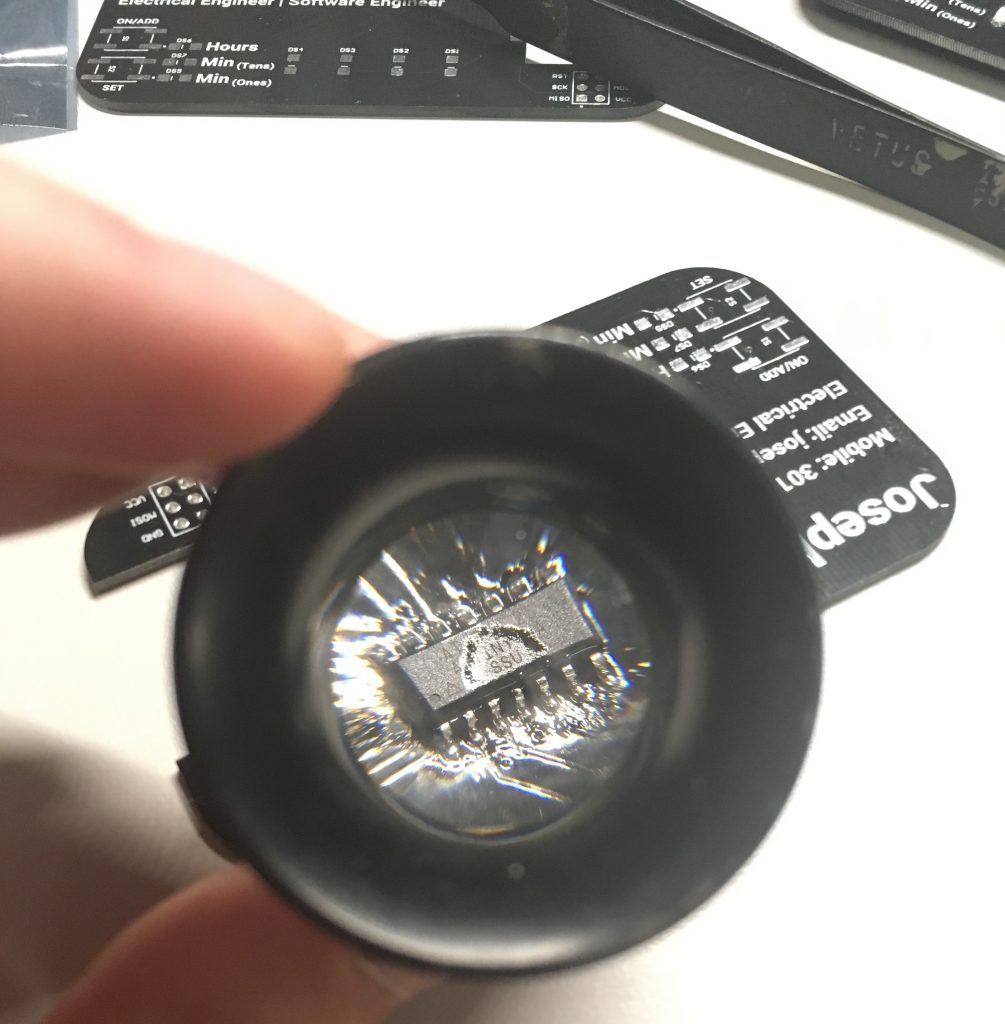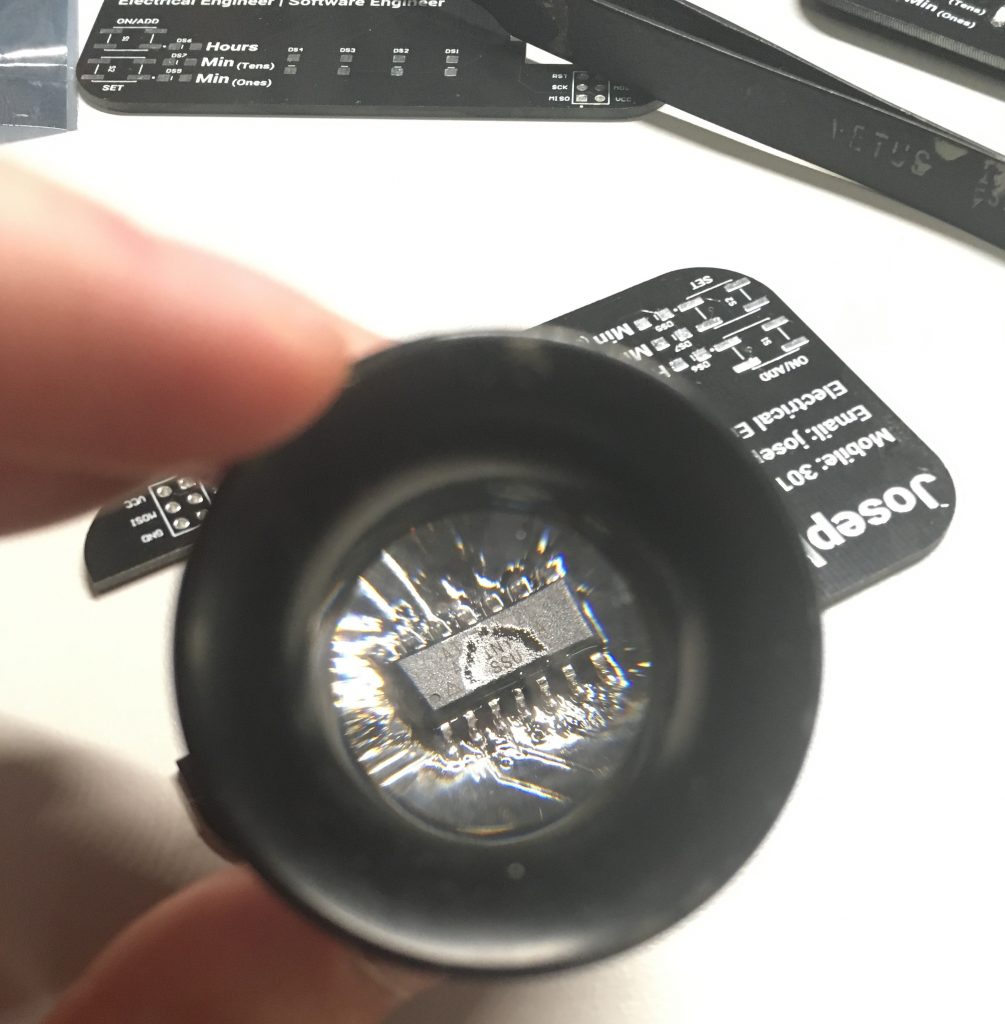An ok way to get a job

This business card duals as a binary clock. Pressing the top button allows the user to scroll through hours, minutes (tens), minutes (ones), and off in binary format displayed on the LEDs. The second button allows the user to set the time. The microcontroller keeps track of the time by using I2C to communicate with the low power RTC module it is also responsible for displaying the time on the LEDs and reading button input. The microcontroller goes into a low power sleep mode when the business card is “off”. The button is linked to a hardware interrupt on the microcontroller that takes it out of sleep when the button is pressed.
| Start – Completion | July 2018 – September 2018 |
| Languages & Technologies Used | Altium, Printed Circuit Board, ATTiny84, I2C, Real-Time Clock (RTC) module, C Programming, Interrupts |

Inspiration
During all my college freshman career fairs companies did not really seem to notice me. Therefore, for my sophomore year, I resolved to find a way to make myself stand out. I had seen PCB business cards before, but I wanted to do something slightly different. I decided to go with a binary clock PCB business card.
Development & Challenges
One of the challenges I faced was how to efficiently program many of these. Soldering wires to each of these boards individually and hooking those wires up to a programmer would be incredibly tedious and was therefore out of the question. I decided to create a pogo pin adapter to speed up the process.

Shortcomings
These business cards were kinda on the expensive side coming in at about $5 per card (at least with respect to regular business cards). In the future, I may look into designs that don’t require as many separate components or have a cheaper microcontroller.